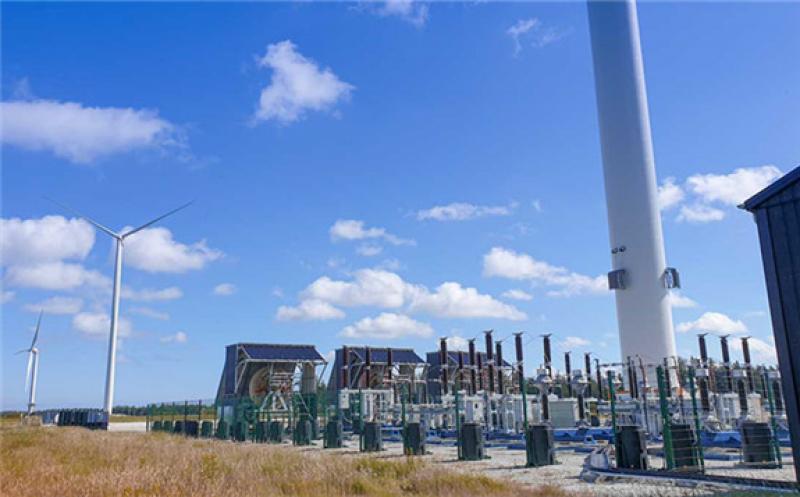Danish offshore wind turbine test expert R&D Test Systems has installed the world’s first Fault Ride Through (FRT) test system rated at 66 kV for the Østerild test facility for wind turbines in Denmark. The system has been developed for the wind turbine manufacturer to conduct extreme voltage tests to ensure its turbines meet international standards required for their connection to electric grids. R&D Test Systems designed the new system to meet Vestas’ specific testing requirements following the installation of a large prototype turbine at the Østerild test site in Denmark, the National Test Centre for Large Wind Turbines operated by the Danish Technical University (DTU).

With the next generation of offshore wind turbines set to become even bigger, with associated increases in power output, windfarms are using ever higher voltages to achieve efficient power transmission through the long cables required to bring the power generated ashore. The new R&D FRT test system now allows turbines to be tested directly at the operating voltage of 66 kV, avoiding any set-down transformer converting the test setup to 33 kV.
“The 66 kV output voltage rated test equipment that was needed was not available on the market. We applied our engineering expertise in large-scale wind turbine tests for the onshore and offshore drive trains and the requirements for grid compliance this new FRT test rig,” said Sascha Heinecke, Sales Director at R&D Test Systems.
“We believe the FRT Test equipment at these high voltages will become standard in the future. As offshore wind turbines will play a significant role in the supply of electricity, testing at extreme voltages will become crucial in proving that a wind turbine type will connect to the electric grid without any hitches. Proving grid compliance is pivotal,” added Heinecke.
Resilience to power quality issues
The point of FRT testing is to prove that wind turbines are resilient to grid power quality issues such as when power transmission cables are damaged in a storm. The test is designed to ensure that the generating units, increasingly located out at sea, do not fail due to voltage variations in the power transmission network – a scenario that could lead to costly downtime, maintenance and, in extreme situations, power outages.
“The test system can simulate power interruptions as well as over- and under-voltage in the transmission network to monitor how the wind turbine reacts,” said Heinecke. “This can range from zero voltage for several hundred milliseconds to over-voltage of 120 percent for hours, and includes asymmetrical imbalances between the electrical phases, classified as Bollen C and Bollen D. The tests conducted have been designed to exceed the strictest grid code, and the turbine must maintain its link to the power transmission network to pass the test and gain type approval for connection to the electric grid,” explained Heinecke.
Requirements of different countries tested
R&D designed the 66 kV FRT system to cope with the varying grid standards within Germany, Spain, the United States and Canada, to guarantee it can ensure compliance with different international grid standards.